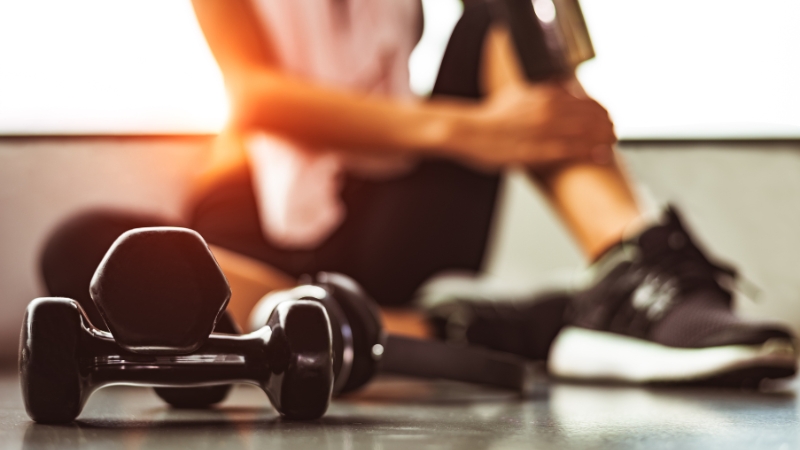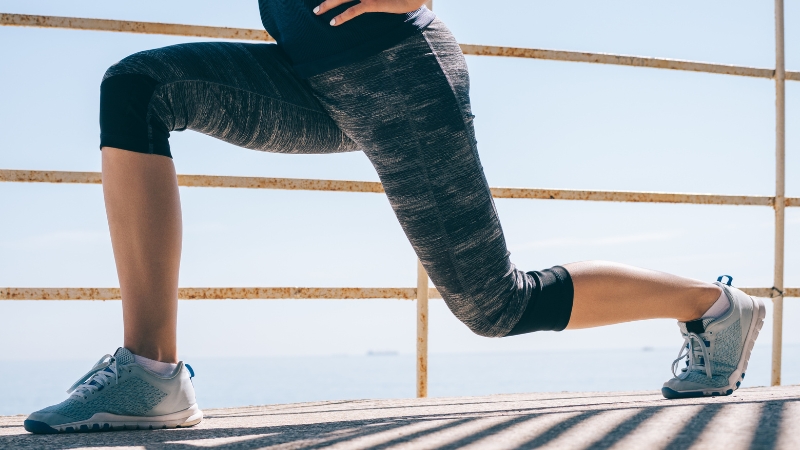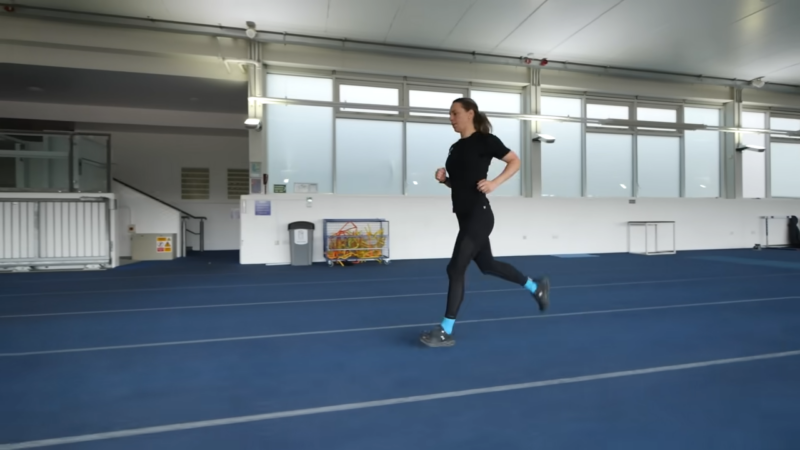
Share Post:
Running is a fantastic way to stay fit and clear your mind, but it also comes with its share of injuries.
We’ve all been there, or we’re all going there, so let’s get into how we can tackle these problems head-on and keep our running shoes on the roads (or trails) for as long as possible.
Table of Contents
ToggleRunner’s Knee (Patellofemoral Pain Syndrome)
According to WebMD, a runner’s knee causes pain around the kneecap, especially when climbing stairs or sitting with bent knees for too long. It usually happens from the kneecap being misaligned or from doing too much running. It can also be exacerbated by weak muscles in the thighs and hips that fail to adequately support the knee joint. To prevent this, maintaining a balanced training regimen that includes flexibility and strength exercises is key.
How to Treat It

Exercises that strengthen the hips, quadriceps, and hamstrings can help align and support the knee. To stay active without strain, try low-impact activities like swimming or cycling. Additionally, using supportive knee braces during recovery can provide extra stability and comfort. Consult with a sports therapist for a personalized set of exercises tailored to your specific needs.
Proper Footwear
Make sure your running shoes fit well and are right for your running style. Replace them every 300-500 miles to ensure they provide enough support. It’s also wise to have your gait and foot type analyzed at a specialty running store to choose the best shoe for your needs.
Wearing women’s comfortable compression socks during these routines can also help by improving circulation and reducing muscle fatigue.
Stress Fracture
A stress fracture is a small crack in the bone that causes pain during running, which feels better after resting. It often happens when you increase your running intensity too quickly.
These fractures are most common in the feet and lower legs, where the repetitive impact of running is most concentrated. To sidestep stress fractures, it’s crucial to listen to your body and recognize the difference between typical muscle soreness and bone pain.
How to Treat It
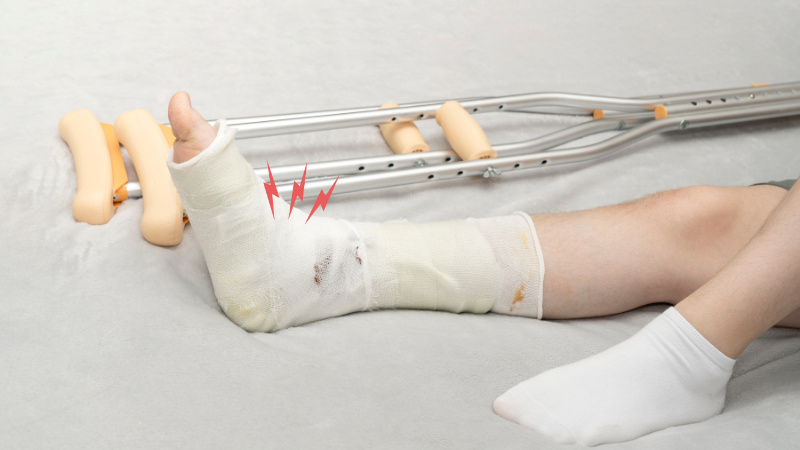
You may need to stop running for a while, and in some cases, use a brace or crutches to keep weight off the injured area until it heals. It’s also beneficial to increase your intake of calcium and vitamin D to support bone health. When returning to running, do so gradually to allow the bone to adapt without overstressing it.
Shin Splints
Shin splints cause pain along the front of your lower legs and are common in new runners or those who suddenly increase their running distance. This pain is typically sharp and occurs both during and after exercise. If left untreated, shin splints can evolve into stress fractures.
How to Treat It

Ice the shins and stretch your calves to reduce pain. Also, check your running form and make sure your shoes aren’t worn out. Investing in shock-absorbing insoles can also provide relief and additional support.
*Ensure your running technique is efficient, with proper stride length and foot landing, to minimize excessive force on the shins.
Achilles Tendinopathy
This injury includes pain, stiffness, and burning around the Achilles tendon, often worse in the morning or after resting. Overuse and excessive strain without adequate rest and recovery can lead to this condition, making it a common issue for runners who rapidly increase their running volume or intensity.
How to Treat It
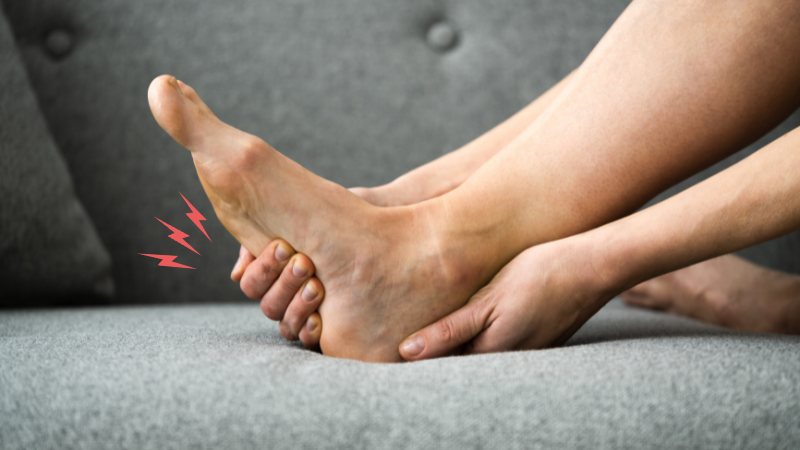
If the problem continues, seeing a physical therapist might be necessary for targeted exercises. It’s also helpful to incorporate eccentric strengthening exercises, which involve lengthening the calf muscles under load, to build strength and improve tendon health.
Plantar Fasciitis
Plantar fasciitis causes sharp pain in the heel, especially with the first steps in the morning. It happens when the thick band of tissue on the bottom of your foot gets inflamed. This is often due to overuse, poor footwear, or inadequate stretching.
How to Treat It
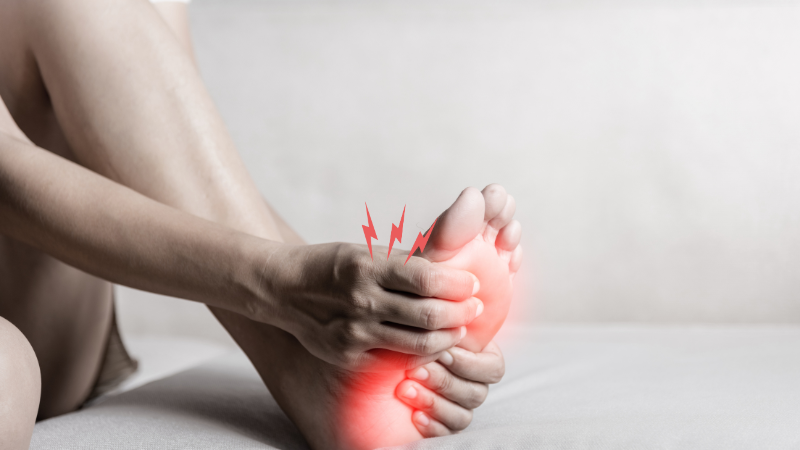
Ice the heel, wear supportive shoes, and consider getting custom orthotics to relieve pain. Additionally, massage therapy and the use of night splints can facilitate a quicker recovery by keeping the plantar fascia gently stretched overnight.
IT Band Syndrome
Pain from IT band syndrome is felt on the outside of the knee. It happens when the iliotibial band, which runs from your hip to the side of your knee, gets irritated.
This irritation often stems from persistent overuse and is particularly common in runners who frequently tackle long distances or hilly terrain.
How to Treat It
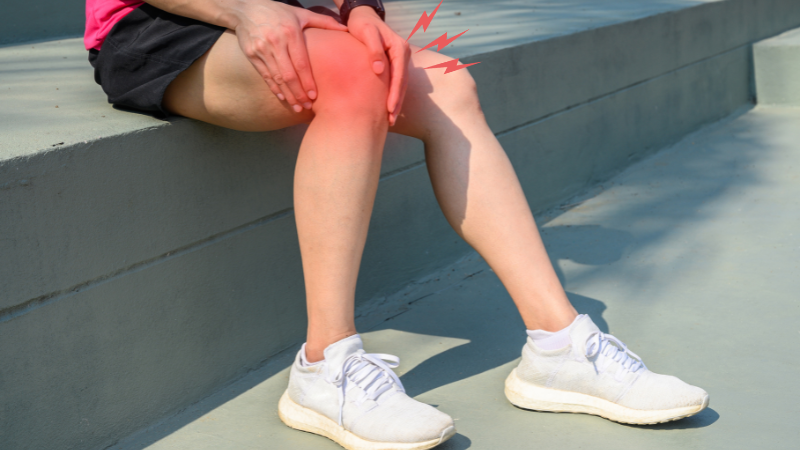
Warm up properly before running, and use ice afterward to manage pain. Exercises to strengthen the hips and thighs can prevent the band from getting too tight.
How to Prevent Running Injuries
Warm-Up and Cool-Down Routines
Always start your runs with a dynamic warm-up to prepare your muscles and end with cool-down stretches to keep muscles flexible.
Incorporating a mix of mobility work to improve joint range of motion can further enhance your running efficiency and prevent injuries.
Increase Gradually
To avoid injuries, increase your running distance and speed slowly.
The rule of thumb is to not increase your workload by more than 10% each week. This gradual progression allows your body to adapt to the new demands without overwhelming your musculoskeletal system.
Strength Training
Adding strength training to your routine a couple of times a week can strengthen your muscles and joints, reducing your risk of injuries.
Focusing on core stability and lower body strength can particularly help in maintaining good running form and avoiding overuse injuries.
In Summary
Running injuries can be a hurdle, but with proper care, treatment, and preventive measures, they don’t have to stop you in your tracks.
Keep these tips in mind, listen to your body, and adjust your training accordingly.
Sources
1. WebMD – 10 Common Running Injuries: Prevention and Treatment
Related Posts:
- How to Handle a Gym Injury (Without Getting Lost in…
- Treadmill vs Running Outside - Which is Better for…
- How to Lift Properly? Techniques to Avoid Back…
- Top 18 Strangest Gym Injuries You Won't Believe Happened
- Sports Injuries That Take Years to Heal (and How to…
- Posing Tips and Techniques - 10 Tips for Female Bodybuilders






